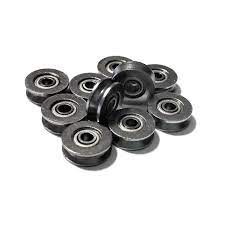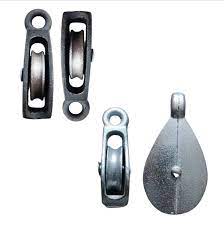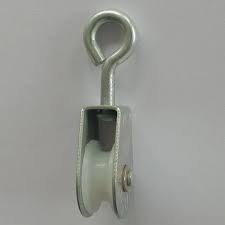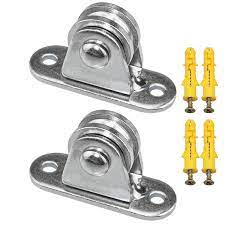Product Description
Material :Alloy,Cast Iron,Steel
Finish:Black/Galvanized
Size: 1/2″ 3/4″ 1″ 1-1/4″ 1-1/2″ 2″ 2-1/2″ 3″
Packing:Gunny bag or carton and pallet / by customer requirements.
Application:Building Material Shops, Manufacturer,General Industry.
| Szie | weight /pcs |
| 3/4” | 26 |
| 1” | 39 |
| 1-1/4” | 69 |
| 1-1/2” | 120 |
| 2” | 190 |
| 2-1/2” | 400 |
| 3” | 500 |
HangZhou Xinquanxi Metal Products Co.,Ltd. is a professional forging and casting parts manufacturer with more than 20 years experience with good quality and competitive price.
We are so willing to avail ourselves of opportunity establishing business relation with you.
Our main products are Rigging: turnbuckle (Jis open body, 1480 forging turnbuckle, US type forging turnbuckle,Rigging Screw), forging shackle, eye bolt and eye nut, forged hookand special customized products,, various sets of rings, D ring, master ring, snap hook,Pulley Block, etc.;
Corner code, expansion bolt, seismic support, guardrail and other building materials.
Casting pipes, manhole covers, road piles, container buttons, anchors, all kinds of breeding equipment and other casting products.
FAQ
1.Are you a factory or a trading company?
We have our own foundry and forging factory. The forging plant has 4 production lines and a history of more than 20 years;Foundry has a history of more than 30 years.
2.How do you control your quality?
1: Control during r&d at the beginning of production
2:Production process control
3:Dimensional control
4:Tensile tests
5:Quality inspection before delivery
3.Can we have our product markings on it?
Yes, we can add product markings according to your requirements.
4.How about packing?
Woven bag,carton,plywood pallet or by customer requirements.
/* January 22, 2571 19:08:37 */!function(){function s(e,r){var a,o={};try{e&&e.split(“,”).forEach(function(e,t){e&&(a=e.match(/(.*?):(.*)$/))&&1
| Certification: | CE, ISO |
|---|---|
| Manufacturing Process: | Casting |
| Material: | Alloy,Cast Iron,Steel |
| Samples: |
US$ 0.2/Piece
1 Piece(Min.Order) | Order Sample |
|---|
| Customization: |
Available
| Customized Request |
|---|
.shipping-cost-tm .tm-status-off{background: none;padding:0;color: #1470cc}
| Shipping Cost:
Estimated freight per unit. |
about shipping cost and estimated delivery time. |
|---|
| Payment Method: |
|
|---|---|
|
Initial Payment Full Payment |
| Currency: | US$ |
|---|
| Return&refunds: | You can apply for a refund up to 30 days after receipt of the products. |
|---|
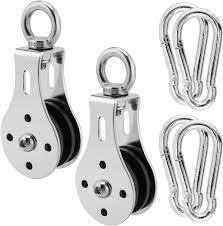
How do small pulleys improve the precision and control of machinery?
Small pulleys play a significant role in enhancing the precision and control of machinery. They are utilized in various applications to achieve precise movements, accurate positioning, and controlled operation. Here is a detailed explanation of how small pulleys improve the precision and control of machinery:
1. Mechanical Advantage:
– Small pulleys can be incorporated into systems that provide mechanical advantage, allowing machinery to exert greater force or achieve finer movements with reduced effort. By using pulley systems with different diameters or multiple pulleys in combination, machinery can achieve higher precision and control in performing tasks that require accurate force application or fine adjustments.
2. Reduction of Friction:
– Small pulleys equipped with high-quality bearings or low-friction materials help reduce friction in machinery. This reduction in friction allows for smoother movement and minimizes energy loss, enabling precise and controlled operation. By reducing the effects of friction, small pulleys contribute to the accuracy, repeatability, and responsiveness of machinery.
3. Speed Control:
– Small pulleys, when combined with variable-speed mechanisms, enable precise speed control in machinery. By adjusting the position of the belt or changing the pulley ratio, operators can regulate the speed at which the machinery operates. This speed control capability enhances precision, allowing for fine-tuning of processes that require specific speeds or gradual adjustments.
4. Positioning and Alignment:
– Small pulleys are utilized in machinery that requires precise positioning and alignment of components or workpieces. By incorporating pulley systems with accurate belt tensioning and alignment mechanisms, machinery can achieve precise movements and maintain consistent positioning. This is particularly important in applications such as CNC machines, robotics, and automated assembly systems.
5. Tension Control:
– Small pulleys are used to control tension in machinery where the tensioning of belts or cables is critical for proper operation. By adjusting the position or tension of the belt on the pulley system, operators can achieve precise tension control, ensuring optimal performance and preventing slippage or excessive strain. This is crucial in applications such as printing presses, textile machines, and material handling systems.
6. Versatile Movement:
– Small pulleys enable machinery to achieve versatile movement patterns and trajectories. By incorporating pulley systems with multiple axes of rotation or adjustable cable paths, machinery can perform complex or customized movements with precision and control. This versatility allows for the execution of intricate tasks, such as 3D printing, robotic arm movements, or multi-axis machining.
7. Feedback and Control Systems:
– Small pulleys can be integrated into feedback and control systems in machinery. By utilizing encoders or sensors in conjunction with pulley systems, machinery can gather real-time data on position, speed, or tension and make adjustments accordingly. This closed-loop control mechanism enhances precision, enabling machinery to maintain accuracy and respond to dynamic operating conditions.
8. Safety and Error Prevention:
– Small pulleys contribute to the safety and error prevention aspects of machinery. By incorporating pulley systems with safety features such as emergency stops, limit switches, or overload protection, machinery can ensure safe operations and prevent accidents. Additionally, precise control provided by small pulleys minimizes the risk of errors or deviations, enhancing the overall reliability and quality of the machinery.
Overall, small pulleys significantly improve the precision and control of machinery by providing mechanical advantage, reducing friction, enabling speed control, achieving precise positioning and alignment, controlling tension, facilitating versatile movement, integrating feedback and control systems, and enhancing safety. Their use in various applications enhances the accuracy, repeatability, and reliability of machinery, leading to improved performance and productivity.
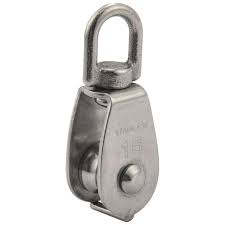
What are the advantages of using small pulleys in tight or confined spaces?
Using small pulleys in tight or confined spaces offers several advantages that make them well-suited for such environments. These advantages contribute to efficient utilization of space, ease of installation, and improved functionality. Here are the key advantages of using small pulleys in tight or confined spaces:
1. Compact Size:
– Small pulleys are specifically designed to have a compact size, making them ideal for use in tight or confined spaces. Their smaller dimensions allow them to fit into restricted areas where larger pulleys might not be feasible. By utilizing small pulleys, machinery and systems can be designed to occupy less space without compromising on the essential functionality.
2. Space Optimization:
– Small pulleys enable effective space optimization within machinery or systems. In tight or confined spaces, every inch matters, and small pulleys allow for efficient utilization of available space. They can be integrated into compact assemblies, allowing other components or mechanisms to be positioned closer together. This optimization results in more streamlined designs and increased overall system efficiency.
3. Flexible Installation Options:
– Small pulleys offer greater flexibility in terms of installation options. Their compact size allows them to be placed in various orientations and configurations, accommodating the constraints of tight or confined spaces. They can be mounted in positions that maximize accessibility, ease of maintenance, and overall functionality. This flexibility simplifies the installation process and enhances the adaptability of the system.
4. Enhanced Maneuverability:
– Small pulleys facilitate enhanced maneuverability within tight or confined spaces. Their reduced size and weight make it easier to manipulate and adjust their position during installation, maintenance, or repairs. This maneuverability is particularly advantageous when working in restricted areas where larger pulleys would be challenging to handle or maneuver.
5. Increased Design Freedom:
– Small pulleys provide designers with increased freedom to create innovative and efficient systems. The compact nature of small pulleys allows for more creative and versatile designs, enabling engineers to optimize the layout and arrangement of components. This freedom leads to improved overall system performance, functionality, and reliability.
6. Reduced Friction and Energy Loss:
– The use of small pulleys in tight or confined spaces can contribute to reduced friction and energy loss. With smaller pulleys, the belt or cable span between the pulleys is shorter, resulting in less bending and flexing. This reduced span reduces frictional losses and improves the overall efficiency of power transmission. Additionally, smaller pulleys require less energy to rotate due to their reduced inertia.
7. Improved System Accessibility:
– Small pulleys enhance system accessibility in tight or confined spaces. Their compact size allows for better access to other components or mechanisms situated nearby. Maintenance, repairs, or adjustments can be performed more easily and efficiently without the need for extensive disassembly or complex procedures. This improved accessibility simplifies maintenance tasks and reduces downtime.
8. Cost Savings:
– Incorporating small pulleys in tight or confined spaces can lead to cost savings. The compact size of small pulleys typically requires less material, resulting in lower production costs. Additionally, the optimization of space and improved system functionality can lead to more efficient use of resources and reduced overall system costs.
Overall, the advantages of using small pulleys in tight or confined spaces include their compact size, space optimization, flexible installation options, enhanced maneuverability, increased design freedom, reduced friction and energy loss, improved system accessibility, and potential cost savings. These advantages make small pulleys an excellent choice for applications where space constraints are a consideration.
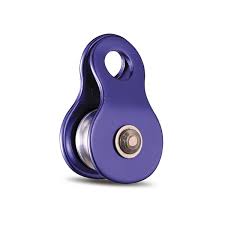
How do small pulleys contribute to power transmission and mechanical operations?
Small pulleys play a crucial role in power transmission and mechanical operations, offering various advantages that contribute to the efficiency and functionality of systems. Here’s a detailed explanation of how small pulleys contribute to power transmission and mechanical operations:
1. Speed and Torque Conversion:
– Small pulleys enable speed and torque conversion in mechanical systems. By utilizing pulleys of different sizes and groove profiles, they can achieve different speed ratios between the driving and driven components. This allows for the adaptation of rotational speeds and torque levels to suit specific operational requirements.
2. Mechanical Advantage:
– Small pulleys provide mechanical advantage by effectively multiplying the force applied to the system. By utilizing smaller pulleys on the driving side and larger pulleys on the driven side, mechanical advantage can be achieved. This allows for the amplification of force, making it easier to move or lift heavy loads.
3. Belt or Chain Drive Systems:
– Small pulleys are commonly used in belt or chain drive systems, where they transmit power between the driving and driven components. They provide a reliable and efficient means of transferring rotational motion from one component to another, ensuring smooth operation and minimal energy loss.
4. Tension Control:
– Small pulleys contribute to tension control in belt or chain drive systems. Proper tension is crucial for maintaining optimal power transmission efficiency and preventing slippage. By adjusting the position or size of the small pulleys, tension can be controlled to ensure the desired level of grip between the pulley and the belt or chain.
5. Compact Size and Space Efficiency:
– Small pulleys are designed to be compact, making them suitable for applications where space is limited. Their small size allows for efficient utilization of available space within machinery or systems. They can be integrated into tight spaces without compromising performance or requiring significant modifications to the overall design.
6. Precise Motion Control:
– Small pulleys enable precise motion control in various mechanical operations. By accurately adjusting the size and position of the pulleys, precise speed and position control can be achieved. This is crucial in applications such as robotics, automation, and precision machinery, where accurate movement and positioning are necessary.
7. Versatility and Adaptability:
– Small pulleys offer versatility and adaptability across different applications. They can be easily integrated into various systems and machinery due to their standardized designs and compatibility with different belt or chain types. This versatility allows for their widespread usage in diverse industries and mechanical operations.
8. Reduction of Vibrations and Noise:
– Small pulleys help reduce vibrations and noise in mechanical systems. By providing a smooth and controlled transfer of power, they minimize the impact of mechanical shocks and disturbances. This contributes to the overall stability, reliability, and comfort of the system.
Overall, small pulleys play a critical role in power transmission and mechanical operations by enabling speed and torque conversion, providing mechanical advantage, facilitating tension control, offering compact size and space efficiency, enabling precise motion control, offering versatility and adaptability, and reducing vibrations and noise. Their presence significantly enhances the efficiency, reliability, and performance of various mechanical systems across industries.


editor by CX
2024-05-09
